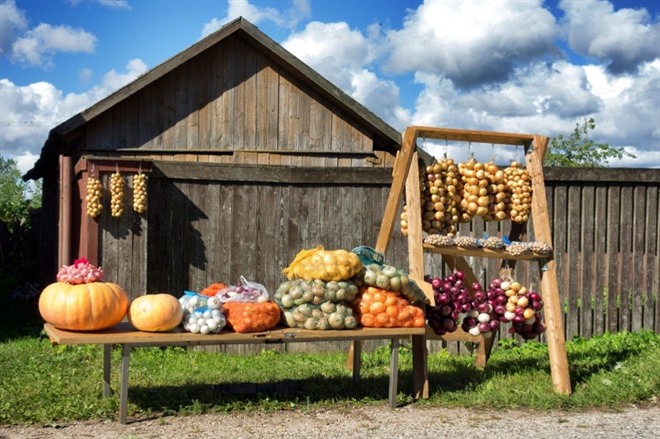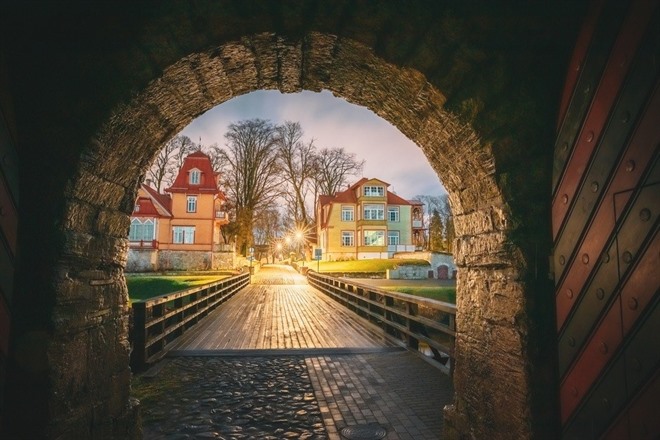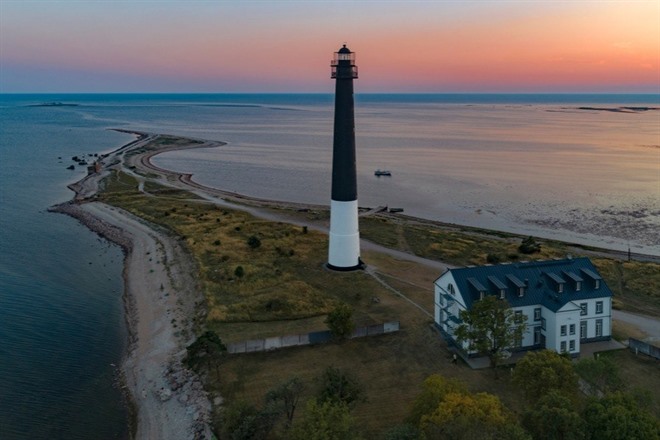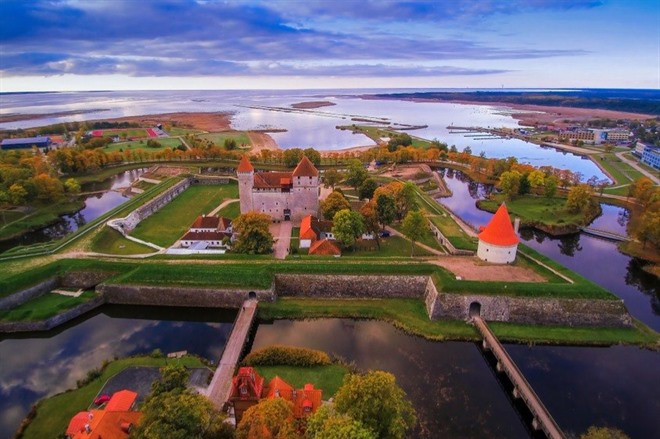- Discover the Onion Route on the shores of Lake Peipsi
- Explore some of Estonia’s unique national parks such as Soomaa and Vilsandi
- See the legendary impact site of a meteorite at Kaali Crater
- Experience Estonia’s island culture with visits to Kihnu, Muhu and Saaremaa
Estonia On The Road
Embark on an unforgettable journey through Estonia's diverse landscapes and rich cultural heritage with our 11-day Estonia On The Road fly-drive. From the medieval allure of Tallinn to the tranquil island culture of Saaremaa. Explore coastal resorts, boggy national parks, and discover unique traditions along the Onion Route. Witness the natural wonder of Kaali Crater and delve into historic towns and Soviet legacies on this Estonian road trip adventure.
Tour Itinerary

Fly to Tallinn and collect the hire car at the airport. Drive to Estonia’s capital city (5km, 15 minutes) and check in to the hotel for two nights.

Enjoy a free day at leisure in Tallinn. Make time to explore the medieval Old Town with its enchanting muddle of 13th century church spires, maze of narrow streets and impressive Town Hall Square. Stop to relax in one of the city’s many chic cafés. Perhaps drive out to Tallinn’s TV Tower. Officially opened on July 11th, 1980, the 314m tower remains a striking symbol of Soviet engineering prowess. Its observation deck, situated at 175m, the highest in Northern Europe, offers panoramic views, including glimpses of Finland on clear days. The renovated tower also houses a museum. (B)

Today drive east to Narva (215km) with stops off in Lahemaa National Park. Discover its coastal cliffs and pristine forests. Conveniently located just off the Tallinn-Narva highway is Viru Bog with an easy 3.5km trail through forest and bog landscapes, showcasing the region's rich flora and geological features. Maybe stop off in Sillamäe, a town created under Stalin, so it is possible to explore Soviet-era architecture and its picturesque promenade. On arrival in Narva spend some time exploring Hermann Castle (also known as Narva Castle) was built during the 14th-centure. Enjoy an evening stroll along the River Promenade. (B)

Drive south to Tartu, European Capital of Culture 2024 (213km). The road follows the shoreline of Lake Peipsi, the largest trans-boundary lake in Europe. Stop off to visit Alatskivi – a neo-Gothic castle from the 17th-century. Explore the scenic Onion Route and stop off the village of Kolkja, where there is a famous onion restaurant serving delicious pies.
A visit to the Old Believers Museum is a must here. The Russian Old Believers migrated to Estonia in the 17th century to escape religious persecution in Russia due to their adherence to traditional Orthodox beliefs. They settled by Lake Peipsi because of its remote location, providing them with a sanctuary to practice their faith freely. The Old Believers uphold unique traditions, including distinctive clothing and intricate rituals. Families within the Old Believer community have cultivated onions for generations, following local traditions, which have become deeply ingrained in their cultural identity. If time allows continue further south to Varnja and its Old Believers Prayer House. In Tartu check in the hotel for 2 nights. (B)

Today, explore the city of Tartu, often dubbed the intellectual and cultural heart of Estonia and home to the nation's most prestigious university, the University of Tartu. Here, students, professors, and researchers constitute a significant portion of the population, infusing the city with a youthful and vibrant energy. This vitality is mirrored in the city's ever-evolving arts scene, featuring diverse programs that captivate year-round, a bustling café culture, and an array of art galleries to explore.
Despite its youthful spirit, Tartu also boasts a rich historical heritage. Its streets are graced with the elegant traces of classical 18th-century architecture, grand monuments, and a multitude of enlightening museums. Do include a visit to The Estonian National Museum in Tartu, the largest museum in Estonia. Explore the everyday life of Estonians and learn about Finno-Ugric peoples. The building is very impressive with temporary exhibitions, a restaurant, and a museum shop. (B)

Head west through rural landscapes and charming villages to the town of Viljandi (79km), heart of Estonia folk music. Perhaps explore Soomaa National Park (50km) with its extensive bogs surrounded by forests, rivers, flood-meadows and flower-filled wooded meadows. There are plenty of hiking trails and boardwalks, which take you through the park’s bogs and wetlands. Back in the town of Viljandi see the ruins of the Viljandi Order Castle and admire the artwork of naïve Estonian painter Paul Kondas, or maybe catch a performance at Estonian Traditional Music Centre. (B)

Today we recommend an early morning drive to Munalaid Harbour for a short ferry trip to Kihnu, Estonia's seventh-largest island. It boasts a rich cultural heritage recognised by UNESCO. Home to a tight-knit community of 700, it preserves traditions like music, dance, and crafts. Women are custodians of these traditions, often seen in traditional attire. Festivals and events showcase Kihnu's vibrant culture, while the Kihnu Museum offers insights into its history. There is a 23km route that takes you through all four villages on the island. There are several small handicraft shops on the island and a harbour market is organised in the summertime to trade local foods and handicrafts. Take the last ferry back to Parnu (40km) for an overnight stay here. (B)

Perhaps spend some time exploring the resort of Parnu before driving to Virtsu (70km) for the 30-minute ferry ride over to the islands of Muhu and Saaremaa (86km). Explore some of the sites of Muhu before crossing over to Saaremaa. Stop in the village of Koguva and learn about its history at the village's farm museum. Nearby is one of the oldest churches in Estonia - St. Catherine's Church.
Pädaste Manor is a centuries-old manor house and Estonia’s only five-star spa hotel outside of Tallinn. It is also home to MICHELIN-recommended Restaurant Alexander. Muhu is also famous for its black bread so visit the bakery in Liiva village. In Kuressaare check in to your hotel for 2 nights. (B)

Spend the day exploring Estonia’s largest island. Admire Saaremaa’s famous Angla windmills for insights into the island’s milling history, visit the ancient settlement of Asva to discover Saaremaa's Viking heritage and see legendary Kaali Crater, formed by a meteorite impact 7,500 years ago. Head to the northern side of the island to enjoy views from Panga Cliffs. Visit Lahhentagge Distillery, which transforms Christmas trees from Kuressaare and Pärnu in Estonia, as well as Helsinki and Loviisa in Finland, into spruce-flavoured tonics. Perhaps explore Vilsandi National Park, the oldest protected area in the Baltics, renowned for its seal rookeries and diverse birdlife. Catch a breathtaking sunset at Sõrve Lighthouse, located on the island's southern tip. (B)

Don’t leave the island without spending some time exploring the main town of Kuressaare with its quaint cafes and handicraft shops. Visit the well-preserved defensive fortification of Kuressaare Castle, home to a historical museum. And don't miss the chance to unwind and rejuvenate at one of Kuressaare's renowned spas, where you can indulge in the therapeutic benefits of the local medicinal clay deposits. Continue your journey to Haapsalu (160km), a serene coastal town with a rich historical legacy. Explore Haapsalu Castle and enjoy a stroll along the seaside promenade with panoramic views of the Baltic Sea. (B)

This morning drive from Haapsalu to Tallinn Airport (108km) and return the car before flying back to the UK. (B)
Pricing Information
Price Includes
- Return International flights from the UK to Estonia
- All airport taxes and security charges
- Accommodation in three/four-star hotels with breakfast
- Car Hire Group B with CDW, unlimited mileage, insurance, theft, vat, airport fees and all local taxes**
Price Excludes
- Ferry tickets - please contact us for details
- Travel Insurance
- Any meals not specified in the itinerary
- Optional excursions
Price Includes
Price Excludes
Price Notes
* Air Baltic fly from London Gatwick to Tallinn. Other options are available
** Please contact us for terms and conditions of the car hire plus any optional extras such as additional driver, or GPS
This is an example itinerary accompanied by a guide price. If you would like alternative options, or if you have a higher or lower budget than the guide price, please ring one of our travel specialists on 0207 666 1290 and we can tailor this trip to suit your precise requirements.
Tour Route Map
- Estonia, Tallinn
- Estonia, Lahemaa National Park
- Estonia, Narva
- Estonia, Tartu
- Estonia, Viljandi
- Estonia, Parnu
- Estonia, Saaremaa & Muhu Islands
- Estonia, Kuressaare
- Estonia, Haapsalu
- Estonia, Tallinn
